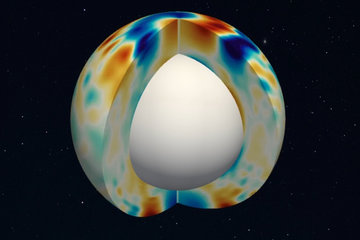All genres
221.
Journal Article
Foreword. J. Phys.: Conf. Ser. 118, 011001 (2008)
222.
Journal Article
f-mode interactions with thin flux tubes: the scattering matrix. Astrophysical Journal 680, pp. 774 - 780 (2008)
223.
Journal Article
Structure and evolution of supergranulation from local helioseismology. Solar Physics 251, pp. 417 - 437 (2008)
224.
Journal Article
High-resolution mapping of flows in the solar interior: Fully consistent OLA inversion of helioseismic travel times. Solar Physics 251, pp. 381 - 415 (2008)
225.
Journal Article
The forward and inverse problems in time-distance helioseismology. J. Phys.: Conf. Ser. 118, 012033 (2008)
226.
Journal Article
HELAS local helioseismology activities. Communications in Asteroseismology 156, pp. 93 - 105 (2008)
227.
Journal Article
HELAS: local helioseismology data website. J. Phys.: Conf. Ser. 118, 012087 (2008)
228.
Journal Article
Fourier analysis of gapped time series: Improved estimates of solar and stellar oscillation parameters. Solar Physics 251, pp. 31 - 52 (2008)
229.
Journal Article
Fourier analysis of gapped time-series. Communications in Asteroseismology 157, p. 369 - 369 (2008)
230.
Journal Article
Linear sensitivity of helioseismic travel times to local flows. Astron. Nachrichten 328, pp. 228 - 233 (2007)
231.
Journal Article
The linear sensitivity of helioseismic ring diagrams to local flows. Astrophysical Journal 662, pp. 730 - 737 (2007)
232.
Journal Article
SLiM: a code for the simulation of wave propagation through an inhomogeneous, magnetised solar atmosphere. Astron. Nachrichten 328, pp. 313 - 318 (2007)
233.
Journal Article
Editors' note. Astron. Nachrichten 328, p. 203 (2007)
234.
Journal Article
Outstanding problems in local helioseismology. Astron. Nachrichten 328, pp. 204 - 210 (2007)
235.
Journal Article
Time-distance helioseismology: Sensitivity of f-mode travel times to flows. Astrophysical Journal 671, pp. 1051 - 1064 (2007)
236.
Journal Article
A procedure for the inversion of f-mode travel times for solar flows. Astron. Nachrichten 328, pp. 234 - 239 (2007)
237.
Journal Article
Measuring helioseismic travel times. Astron. Nachrichten 328, pp. 215 - 222 (2007)
238.
Journal Article
The Solar Orbiter mission and its prospects for helioseismology. Astron. Nachrichten 328, pp. 362 - 367 (2007)
239.
Journal Article
Direct measurement of travel-time sensitivity kernels for helioseismology. Astrophysical Journal 646, pp. 553 - 559 (2006)
240.
Journal Article
Tomography of the solar interior. Mod. Phys. Lett. A 21, pp. 1701 - 1715 (2006)











